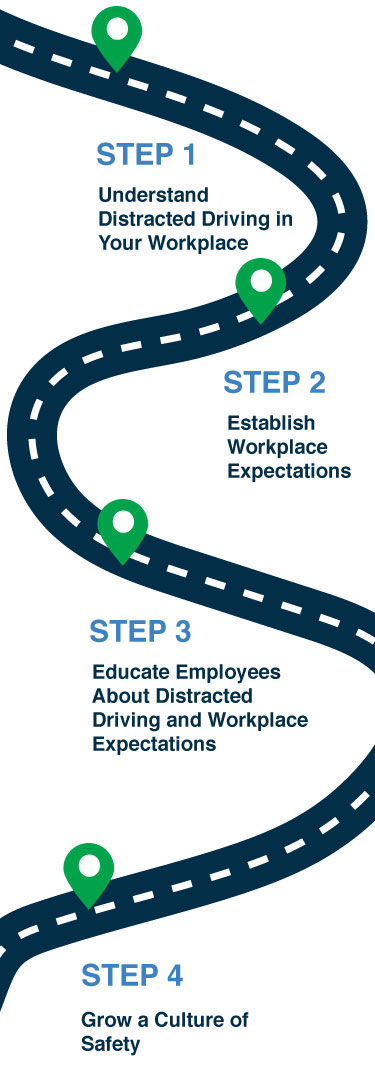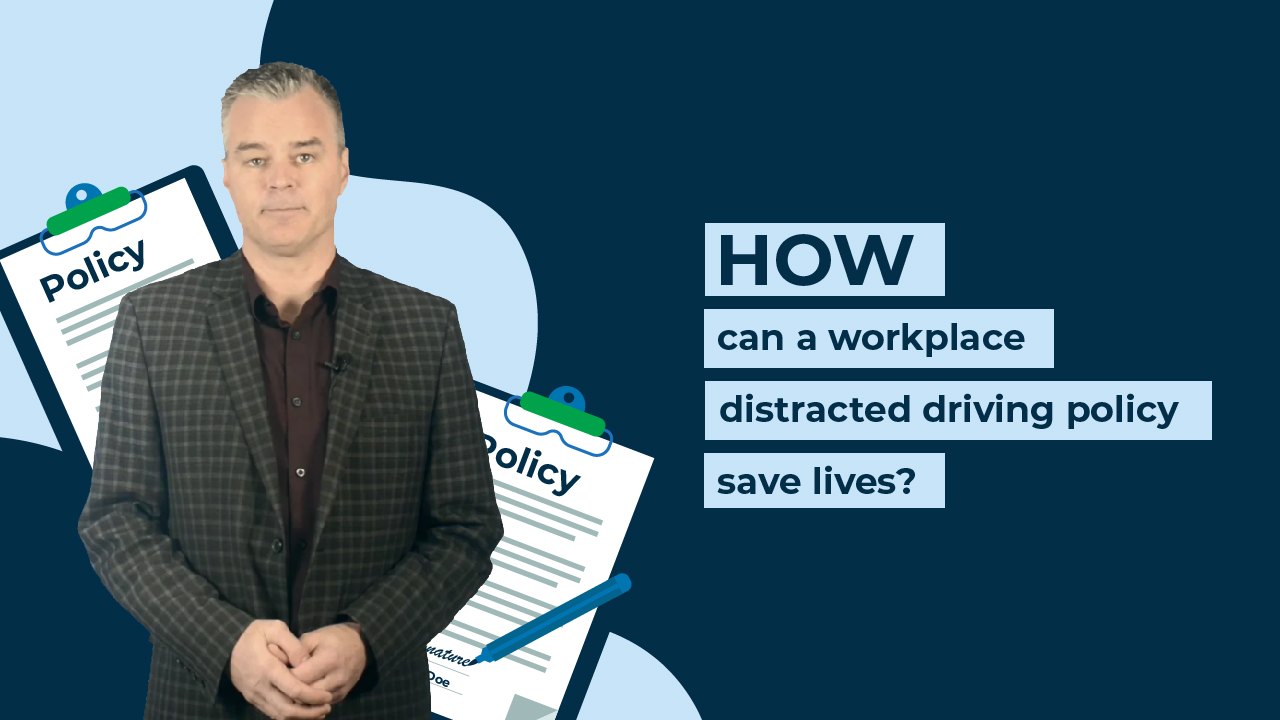Changing behavior is difficult. Simple, “quick fixes” are often not effective. The more ways you can engage employees about safe driving and avoiding distracted driving, the more likely you are to be effective in improving traffic safety.
Employers Can’t Afford to Ignore Distracted Driving
Companies lose billions of dollars through motor vehicle crashes. Educating your workforce about distracted driving will help keep employees safe and may lower costs.
4-Step Toolkit
This website provides a comprehensive 4-Step Toolkit to help businesses and organizations improve employee safety by implementing a distracted driving program in the workplace. These tools will help you:
- Understand how distracted driving impacts the workplace
- Implement a policy
- Conduct training
- Continue a dialogue with employees to promote a culture of safety that includes focused driving.
Short videos help explain each Step of the journey.
Or continue scrolling to learn more about the business impacts and how this website can help you.
Thank you for helping to save lives through your leadership in ending distracted driving!
$60 Billion:
Motor vehicle crashes impact to employers in the U.S. through:
- Medical care
- Legal expenses
- Property damage
- Lost productivity
- Sick days
- Health and disability insurance
- Worker’s compensation
60%
0f crashes involve driver distraction as a factor causing:
- Expenses
- Delays
- Insurance costs
Traffic crashes threaten safety:
Crashes can seriously injure or kill employees or others.
If Your Employees Drive as Part of Their Job Duties, Distracted Driving May Contribute to Crashes
As an influential leader, you play an important role in improving traffic safety in your workplace and in your community. Improving traffic safety saves lives and reduces injuries. Improving traffic safety also directly benefits the workplace by reducing insurance costs, workers’ compensation fees, and lost hours. Many traffic safety incidents occur during the workday or during an employee’s commute to or from work.
This website is designed to help businesses create a workplace culture of safe and responsible driving.
Workplace Distracted Driving Policies Save Lives – at Work and at Home
Research has shown that employees who learn about safe driving at work take that knowledge home to their families and communities.
Creating a culture of safety to reduce distracted driving includes rowing shared beliefs and behaviors that support safe driving among drivers and non-drivers.
This toolkit can help you grow protective beliefs and behaviors that prioritize safety and encourage safe driving behaviors.
How This Website Helps Improve Workplace Driver Safety
Using this website provides guidance in a 4-step process (each with specific tools) to decrease distracted driving among employees in your workplace.

What is Distracted Driving?
Distraction includes taking your eyes off the road, taking your hands off the steering wheel, or taking your mind off what you are doing.
Any number of activities can take the driver’s attention away from the task of driving such as:
Tending to a child or pet
Using a navigation system
Adjusting a radio or other device
Talking to passengers
Talking on a cell phone
Texting or using a messaging app
Browsing websites, answering email, or viewing social media sites or photos
Eating or drinking
Grooming (brushing teeth, applying make-up, etc.)
Inattention Blindness
Even sneaking a peek at text messages or emails while stopped a traffic light is dangerous because the driver may not be able to adjust their eyes from the screen to see a pedestrian or bicyclist in a crosswalk or on the roadway.
Even if the driver’s eyes are on the road, their attention can be elsewhere. This is called inattention blindness.
Unfortunately, people have driven through red lights – while apparently looking straight ahead. While their eyes could see the red light, their mind did not perceive it, and they did not stop.
We'd Love to Hear from You.
Contact Us
- 360.725.9860
- PO Box 40944 Olympia WA 98504-0944
Follow Us
©2025 Distracted Driving Toolkit

